Salzburger Pattern
Salzburger pattern by Ferd. Piatnik & Söhne, Vienna
The Austrian Salzburger pattern is a later variant of, and more or less the same as, the German Bavarian pattern, except that it has the Salzburg coat-of-arms (a turreted gateway) on the king of bells’ shield. The king of hearts’ shield has a barred anchor and a blindfold cupid appears on the two, or daus, of hearts. With its other cousins from neighbouring countries (Bohemian and Franconian patterns) its origin can be traced back to cards of the 16th century. The small vignettes on the numeral cards, depicting folkloric scenes, add extra charm.

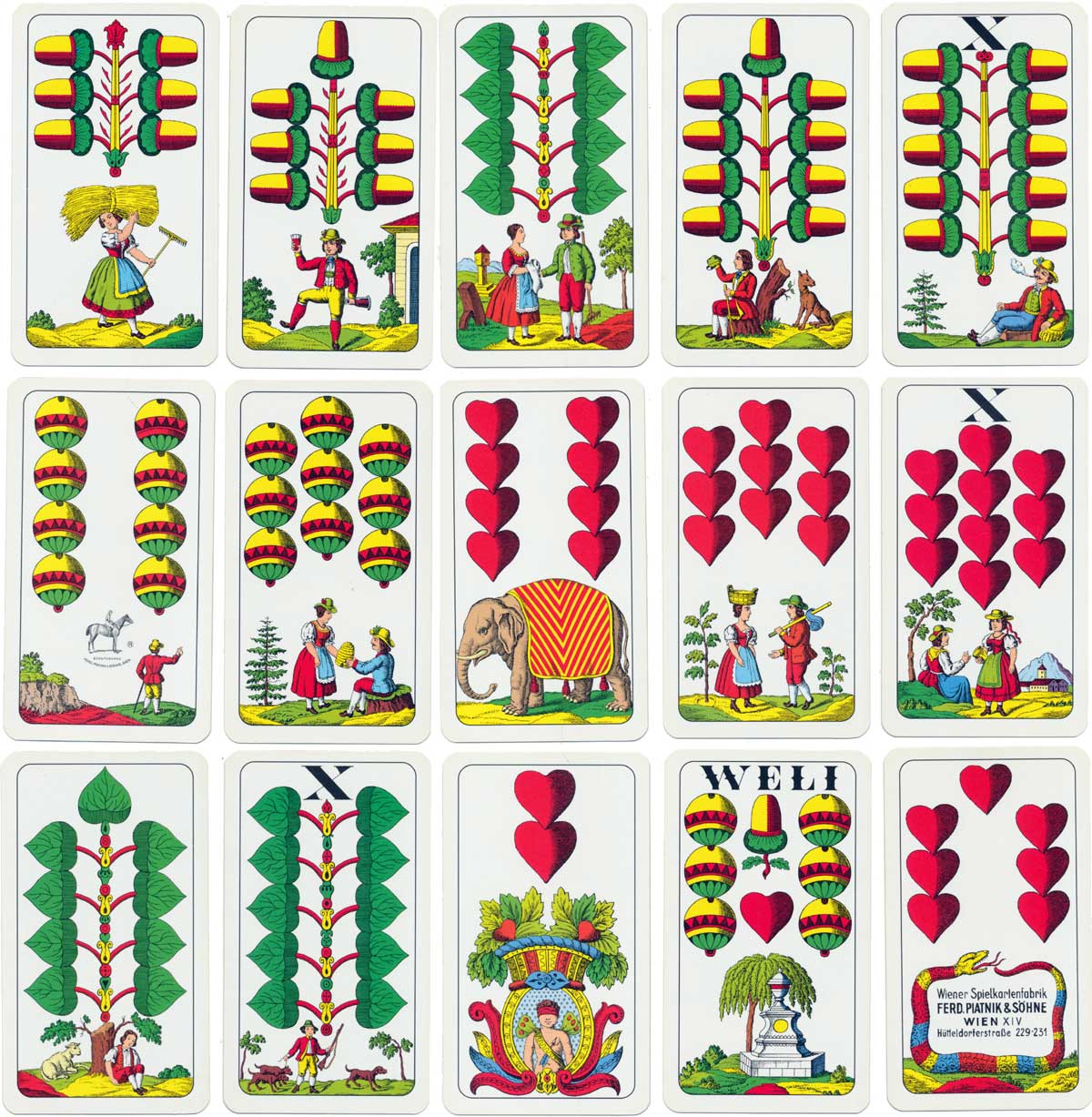
Above: Salzburger pattern by Ferd. Piatnik & Söhne, Vienna. 36 cards, single-ended courts. The ‘WELI’ card (six of bells together with one pip of acorns and hearts) is found in several German-suited Austrian packs. Images courtesy Matt Probert.
By Matt Probert
United Kingdom • Member since March 02, 2012
I have adored playing cards since before I was seven years old, and was brought up on packs of Waddington's No 1. As a child I was fascinated by the pictures of the court cards.
Over the next fifty years I was seduced by the artwork in Piatnik's packs and became a collector of playing cards.
Seeking more information about various unidentified packs I discovered the World of Playing Cards website and became an enthusiastic contributor researching and documenting different packs of cards.
I describe my self as a playing card archaeologist, using detective work to identify and date obscure packs of cards discovered in old houses, flea markets and car boot sales.

Related Articles

Gulliver’s Travels
Gulliver’s Travels card game no.293 published by Piatnik, c.1950.
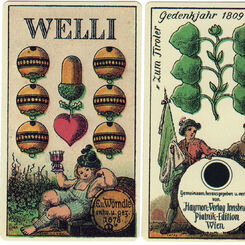
Tyrolean Playing Cards
Facsimile of patriotic 1878 Tyrolean playing cards published by Piatnik in 1992.
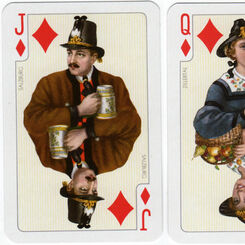
Folklore No.169
Austrian Folklore deck first published by Piatnik in 1934.
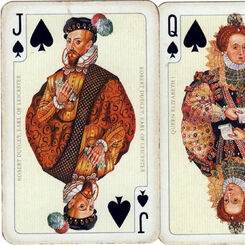
Mary Queen of Scots
Mary Queen of Scots and other Tudor period dignitaries, published by Piatnik, 1990.

Bourgeois Tarot by Piatnik 1987
Piatnik’s ‘Bourgeois Tarot’ in a version published in 1987 with nice quality images, especially the ...
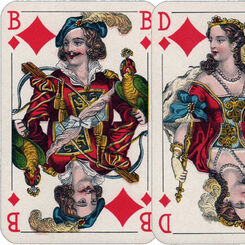
Piatnik No.97
Non-standard French-suited cards published by Ferd Piatnik & Sõhne, Vienna, c.1940s.
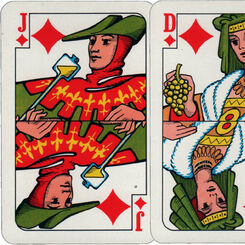
Austrian Wine
Skat deck for Austria’s excellent wines, Österreichischer Weinwirtschaftsfonds, c.1965
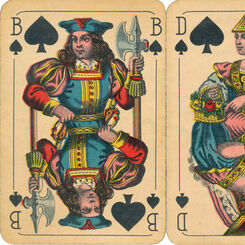
Vienna (ex-Lyon) pattern
‘Vienna pattern’ derived from archaic Lyon pattern by Ferd Piatnik & Söhne A.G., c.1926-1934.
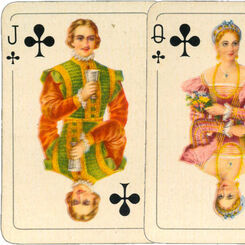
Piccadilly Patience
Piccadilly Patience by Piatnik, c.1955
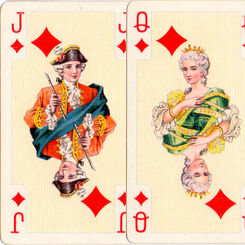
Rococo Playing Cards
Piatnik’s Rococo style playing cards issued as “Rococo Patience”, “Luxus-Patience”, “Empire Patience...
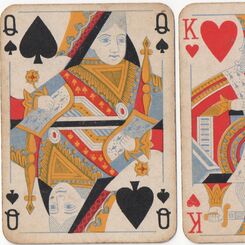
48: Ferdinand Piatnik & Sons
Ferd. Piatnik produced a very large range of cards with many different standard and non-standard pat...

Popular No.257
Piatnik’s “Popular Playing Cards” No.257

Die Neue ÖVP
Promotional deck for the Austrian People’s Party (ÖVP) printed by Piatnik, 1996.
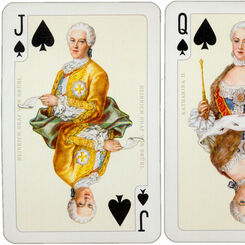
Rococo No.2130
Piatnik: Rococo No.2130 playing cards designed by Prof. Kuno Hock, c.1975
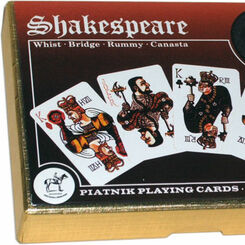
Shakespeare by Piatnik
‘Shakespeare’ playing cards by Piatnik designed by the British actor Donald Burton.
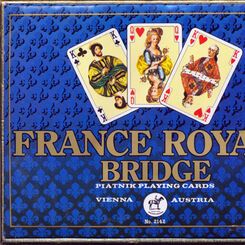
France Royale Bridge
“France Royale” Bridge playing cards by Willy Mayrl depict historical characters from France’s royal...
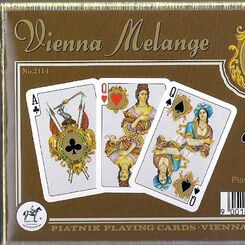
Vienna Melange
“Vienna Melange” Playing Cards by Piatnik with a historical feel representing the four races that ma...
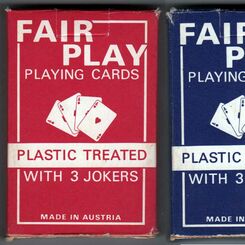
Fair Play
Fair Play budget brand by Piatnik first appeared c.1950 before disappearing in c.1990.

Ferd. Piatnik & Söhne
Ferdinand Piatnik was born in Ofen on October 14, 1819.
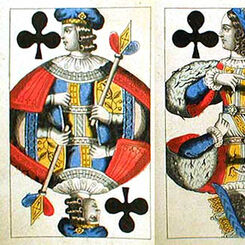
Wiener pattern
The Vienna pattern, or Wiener Bild, is a distant relative of the early Lyons pattern. The King of He...
Most Popular
Our top articles from the past 60 days






















